Electric or oil: which heater is better to choose for your home?
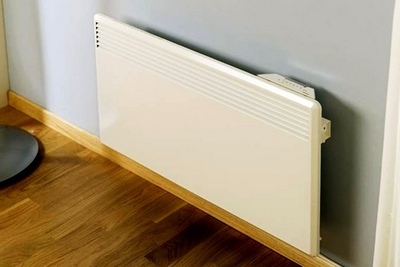
There are several factors that influence the choice.
The most important thing is this how often are people in the house.
When living there permanently, the heater must be powerful and distribute heat throughout the entire room.
If they are found rarely, then the heating device is selected according to the type short-term action.
Types of heaters for a private home
Today you can buy a wide variety of heating devices for home. Each of them has a certain characteristic, operating principle, advantages and disadvantages. Below about all this.
Electric convector units
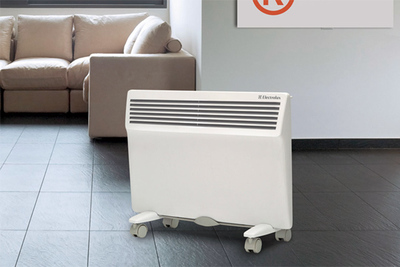
A heating device that operates from the mains according to the principle natural air convection.
Such heaters are in great demand in the market economy due to their ease of installation, smooth and silent operation, and simple operating principle.
The electric convector consists of the following parts: metal body, guide grilles for the outlet of heated air, on/off buttons device, temperature controller, overheating cut-off mechanism, built-in heating mechanism, thermal sensor.
When choosing an electric convector, pay attention to its power, based on calculations 1 kW per 10-12 sq. m. The thermal sensor adjustment is mechanical.
Operating principle
The main unit of the convector is heating device. Cold air enters through the lower grilles to the unit where the heating process takes place. After that, hot air enters the room through the upper guides. This process is called natural oxygen convection (according to the laws of physics, cold air is heavier than hot air, so it always goes down).
When the air heats up to the required temperature, the thermal sensor gives a signal for automatic shutdown; when the unit cools down, turns on. The built-in overheating mechanism prevents short circuits by cutting off power to the heater completely.
Reference! It is not recommended to install the heating device behind doors, curtains or under ventilation openings.
It is strictly forbidden to cover the electric convector either completely or partially. This leads to overheating of the equipment with subsequent breakdown..
Pros:
- Having small overall dimensions, does not take up much space.
- Wide range of use - easy to mount on a wall or place on the floor.
- During operation of the convector does not heat up to high temperatures, which prevents air drying and oxygen burning. This does not require the installation of humidifiers.
- The maximum heating of the outer surface is about 60 degrees. In case of contact with the unit burns are excluded.
- High level of efficiency (up to 95%).
- Long service life.
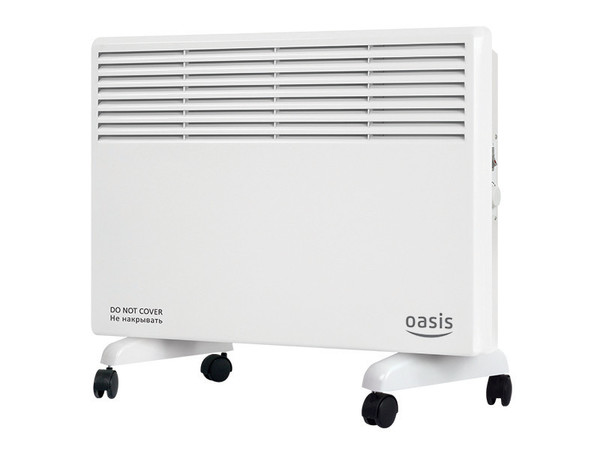
Photo 1. Electric convector LK 20D, power 2000 W, weight 4.8 kg, manufacturer - "OASIS".
Cons:
- Electric convector consumes a lot of electricity and is not effective in areas with large square.
Oil heaters
A heating device resembling standard room radiators. Power is electric. The radiator is filled with special oil, which releases heat during the heating process.
The main working element of the heater is radiator. Black metal is used for manufacturing. The wall thickness is from 0.8 to 1 mm. The construction is manufactured using various types of machines (stamping, pressing, bending, welding and hardening furnaces). The finished radiators are filled mineral transformer oil.
The heater is equipped with electric heating element, metal and plastic panels, on which it is located temperature controller, thermostat switch (turns off the device when overheating), power on/off button.
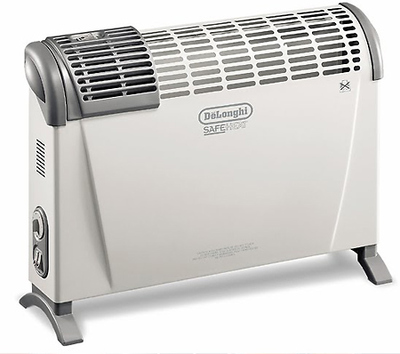
Some heater models have built-in fan, valve for changing oil and removable container for liquid (heaters dry out the air).
The device is installed on wheels, which creates comfortable conditions for its transportation. When choosing an oil heating device, consider the following:
- If the unit has power 3 kW, then in the premises more than 30 sq. m. should be installed at least 2 pieces.
- Number of sections and their dimensions. The larger the sectional layers, the higher the power consumption. The size of the sections also depends on the degree of heating of the room. Narrow parts consume less electricity when heated, but the heating process is reduced.
Carefully! Do not leave the appliance switched on. unattended. Do not cover: high risk of fire. Keep a safe distance from flammable objects and substances. Do not disassemble. on one's own.
Operating principle
An electric coil located inside the heater body, when heated gives off heat to the oil. The oil liquid heats the sections. The heat released enters the room and heats it. The heater, heating the air to the desired temperature, automatically switches off. Then, after the degrees drop, inclusion.
Pros:
- noiselessness works;
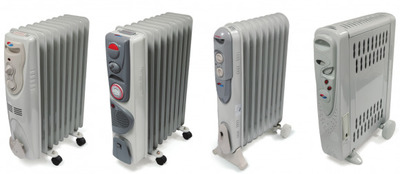
- compactness;
- simple in operation;
- long service life.
Cons:
- Long heating device. Increased case temperature, There is a risk of burns upon contact.
Fan heater
A mobile heating device that can heat a room to the desired temperature in a short time, thanks to a built-in fan. It is intended as an additional heating device.
The fan heater consists of the following parts: frame (metal or plastic), heating device, fan and operating mode mechanism. The heating device is a nichrome spiral or ceramic plates. The power of the fan heater is 1-2 kW per 10 sq. m. premises.
Exists 3 types heater operating modes:
- average power;
- maximum power;
- ordinary ventilation, without heating.
Important! Do not cover the unit. Do not turn it on indoors. with high humidity. Do not leave unattended.
Operating principle
The heater draws air in through the side openings. The heating mechanism heats it up and, with the help of a fan, expels the heated air into the room.
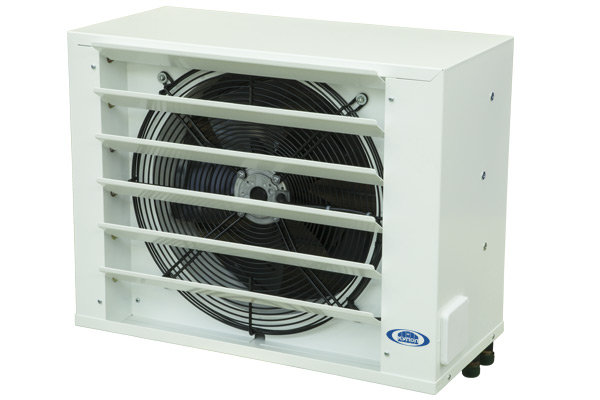
Photo 2. Water heater fan model TPV-15, power 15 kW, manufacturer - "Kupol".
Pros:
- fast warming up;
- compactness;
- versatility work - cooling and heating;
- low cost.
Cons:
- increased noise;
- when turned on it forms smell of burning from burning dust particles;
- destruction oxygen;
- low percentage retained heat;
- device fire hazardous.
Infrared installations
An infrared heater that transfers heat to objects in the room. The rays hit surfaces that can absorb them. The heated objects are heat exchangers.
The device has power from 300 to 2000-cell W. But for the room up to 30 sq. m. the device will fit in 500-from W. The wavelength of the radiation is from 0.74 to 1000 µm. IR heaters are safe in rooms with high humidity. The heating unit is equipped with protective elements against electrical short circuits.
Operating principle
The IR heater transmits rays to objects in the room. The surface of the objects warms up and gives off heat to the air. The room is heated by means of heat transfer from the heated surfaces through processes convection. Thus, it takes only 10%, therefore, if there is no furniture in the room, the heating process will take a long time.
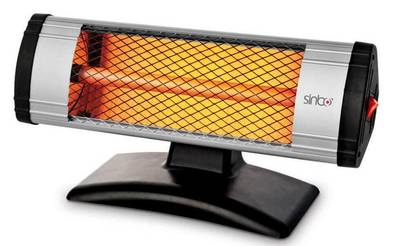
Pros:
- fast heating surfaces;
- non-dust forming;
- does not burn oxygen;
- possibility of warming up a certain area rooms.
Cons:
In multi-room premises installation is required multiple devices.
Diesel devices
A heating device that operates on liquid fuel such as kerosene, fuel oil, etc. Serves as an additional option for heating rooms.
The unit consists of the following parts and units: camera for fuel combustion, fan motor, ignition parts, pump installation, filter parts, fuel tank, pipelines oxygen supply, fire stabilizers, fuel nozzle. Fuel consumption is 100 grams per 1 kW power. With minimal use, subsequent refilling is 2 weeks.
Operating principle
Liquid fuel is poured into the chamber, after which it enters combustion tank. The ventilation engine ignites the fuel and releases warm air into the atmosphere. Filters act as cleaners of combustible fuel particles. Stabilizer The required temperature for the room is regulated.
Pros:
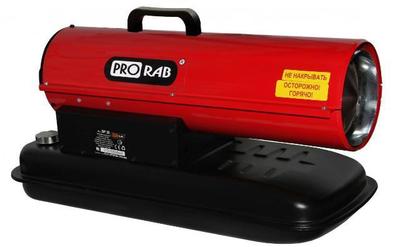
- oversized dimensions;
- economy electricity;
- low fuel price.
Cons:
- when heated, significant smell of combustion product;
- high price of the device heating.
Which one is better to choose?
What you need to consider when choosing a heating unit:
- Determine exactly what area should be heated. The choice of the device power depends on this. You can calculate this yourself based on the passport data of the specific equipment. Keep in mind that the higher the power, the larger the area that can be heated.
- Take into account heating temperature.
- If you have small children, do not purchase heating devices. open type. Or install them in places inaccessible to children.
- Pay special attention to degree of installation safety. It is advisable to select devices that will automatically switch off in the event of power surges, the device being overturned, or overheating. Usually such mechanisms are equipped automatic shutdown modes, thanks to temperature sensors. This is achieved by breaking the electrical circuit when the maximum temperature is exceeded.
- If you only need a heater for your bathroom, be sure to buy one. equipment with a housing and internal units, which protect against high humidity.
- Choose an acceptable management method for yourself - mechanical or electronic. The fact is that with mechanical control, temperature readings can vary. from 5 to 20°C, and if there is an electronic sensor, the most accurate temperature is set. Permissible deviations are 1 degree.
- Mark it place in the house, where will it be installed heating device. When there is little space in the rooms, it is necessary to buy equipment with minimal dimensions.
- If you live in a region with high humidity, then these may be suitable devices that dry out the air. If the climate in your city is already dry, then you will have to give up such devices.
Useful video
Check out this video that discusses the advantages and disadvantages of different types of heaters.
Important points when choosing
To sum it up, it is necessary to clarify that for each specific room you will have to select a certain type of heater. It depends on the area of the room, the frequency of its use and financial capabilities. It is important to correctly compare cost of equipment and further expenses. If necessary, you can always ask sales consultants for help.






